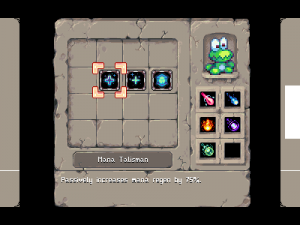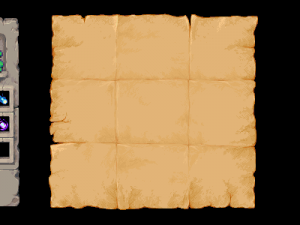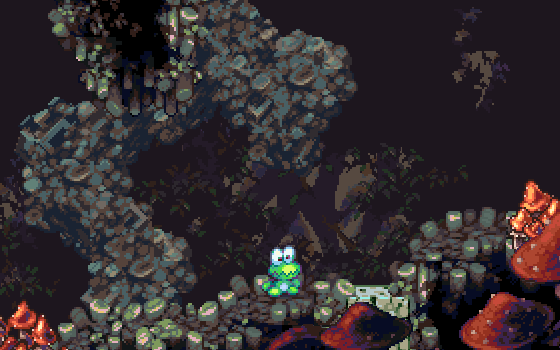We’ve been making some update posts over on our steam greenlight page for a while now, without cross-posting them here. I’m going to start backporting a few of them to here, and try to keep up with consistently cross-posting them in the future.
New flight animations:
A long-running project we’ve had going has been upgrading the animations on all of our older monsters. New monsters we’ve been making from scratch have high frame counts from the get-go; we had several older creatures which didn’t (In the pending release, we’ve just about doubled the number of creatures in the game).
Like a lot of indie game projects, frogatto has been one of those where we’ve been “learning as we go” – our older art was cheaper because my skillset was a lot weaker when I made it. Two of the points of cheapness were that most of the animations had a very low frame-count (about 3 or 4 frames for most “cyclical” animations like walking and flapping), and most of the old monsters were “clones” of each other – they were a similar base body design, recolored, with a few cosmetic bits tweaked to make them look “different enough” whilst allowing most of the animations to be copy-pasteable (with similar recoloring tricks, etc).
The problem with cloning like that is it becomes noticeable after a while – do it too much and even the less aesthetically-inclined players start to notice and it cheapens the experience. Fortunately there were few enough of them that I don’t think we need to actually rip them out – instead, we just needed to draw a line in the sand and say “let’s make sure all of the new ones we add are brand-new designs”. The upside of keeping these existing ones is that if I upgrade one of the core animations for them (like the ant walk cycle, or the flying-ant flap cycle), I can copy over the improvements to all of the other clones and get a lot of bang for the buck – get dramatically better animations on a bunch of creatures for fairly little effort.
So in the last few weeks, I took the flying ant’s core animation and applied it to about 4 other creatures which are seen in the seaside chapter of the game, and a couple creatures seen in the cave chapter of the game.
This post has a comparison of our older flap animations against the new ones:
http://steamcommunity.com/sharedfiles/filedetails/updates/181850301/1427435374
New miniboss fights:
I don’t want to give any story spoilers on this, so forgive me if this sounds a bit analytical and antiseptic…
If you’re familiar with the earlier releases of the game, we’ve got one lonely miniboss fight – one stage where you’re locked in a room and have to fight against 4 regular “kitty” enemies. In that particular fight’s case, it’s a fairly easy battle used to introduce one of the main enemy types in the game, and force the player to familiarize themselves with how the enemies work. We’re going to be adding something like 5 or 6 more such fights in the coming release.
I like these because by putting a simple twist on how a creature is presented in its environment, an existing monster’s challenge-factor can be radically changed (A metaphor I frequently use to explain this is that a sniper in the middle of an empty parking lot is a lot less dangerous than a sniper in a cluttered urban setting). Not only is it good for mixing things up gameplaywise, it’s also good for forcing the player to learn-by-doing, and it’s great for narrative cycles; for adding climax and surprise to different chapters of the game. It’s a shame we haven’t done this before; a number of sections we’ve had in the game prior have been completely devoid of boss-fights, and it really made them feel flat. This, as well as the two new actbosses we’ve finished are really going to help spice things up.
So far we’ve got two of these two miniboss fights mostly done, and we’re got a third one well on its way.
Seaside level enhancements:
Some of the earlier seaside levels date back to the beta of the game – they’ve been reskinned as we’ve redone our graphics, but their basic layout remains the game – especially in the flaw of being a pretty straight-shot linear run from left to right.
I’ve gone over a couple of them (the levels “Splash Hop”, and “Burn and Bubble”) and added some major puzzles to them (where there were no puzzles, before), and I’ve greatly increased the size of them, vertically, adding additional paths you can take through the level, each with its own unique challenges. I’m also in the process of re-adding a great old level we used to have called “Stonepipe Flats” which was made during the beta and got dropped for no really good reason other than me being too lazy to reskin it after one of the big graphical makeovers. It’s high time it had a moment in the spotlight, since it’s a fairly nice level with a few good puzzles on it.











